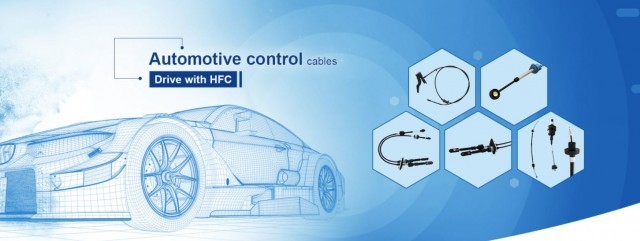Maintenance of the brake system
According to statistics, nearly one-third of road fatalities in my country each year are caused by problems with the braking system, and braking problems are not uncommon in daily driving.
Maintenance of the brake system
According to statistics, nearly one-third of road fatalities in my country each year are caused by problems with the braking system, and braking problems are not uncommon in daily driving. Brake cable dealer—Huafeng recommends that you learn how to maintain the brake system. This is also a lesson that every car owner must learn, because the brake system is an important part of safe driving.
The most important thing in a vehicle is the braking and acceleration system. In fact, the principle of using a car's braking system is to slow down or brake the vehicle through strong friction. When the driver steps on the brake pedal, this movement of the vehicle will change all accessories including auto control cables and control cable assemblies. When the car senses the braking signal, the brake master cylinder senses the pressure exerted by the car's brake fluid, and the fluid transmits the pressure to the four wheels through the pipes of each car. Passed to auto control cables, when the wheel receives the brake signal, the wheel caliper will firmly fix the wheel.

Since braking is done by the brake pads on the wheels, the vehicle will generate a lot of friction, and the response speed of the vehicle's brake connection with the auto clutch cable is very fast. Finally, the friction between the tire and the ground, which is a complete braking system that stops the vehicle. In our opinion, braking is a small action, but this small action involves many auto parts.
Therefore, safe driving is very important to us, and we need to remain calm while driving.
Generally, the replacement cycle of front brake pads is 30,000 kilometers, and the replacement cycle of rear brake pads is 60,000 kilometers. Different models and driving habits are often very different, so the actual test results shall prevail. The following is how to determine whether you need to replace the brake pads:
1. Observation method. There are raised marks on both sides of each brake pad. The thickness of this mark is approximately 2-3 mm. This is also the limit of the thinnest replacement brake disc. The thickness of the brake pads has required replacement of this mark.
2. Listen to the sound. If you lightly step on the brakes and hear the "ironing" squeak, you need to replace the brake pads immediately from the brake cable dealer.The limit marks on both sides of the brake pad indicate that the brake pad has exceeded the limit because it directly rubs the brake disc.
3. Feel the braking force. If the brake pads become thinner, it will affect the braking effect, but to achieve the braking effect that can be achieved by lightly stepping on the brake pedal and the first half of the braking effect, we need to step on the brake pedal harder. Otherwise, the auto control cables cannot feel our instructions. In this way, the braking effect in the operating stroke is significantly weakened. The brakes became softer and it was a bit uncontrollable. Once we feel like we can't stop. At this time, it is necessary to check whether the brake pads and control cable assemblies need to be replaced.
Recommended reading:
Introduction to the service life of auto parts
















